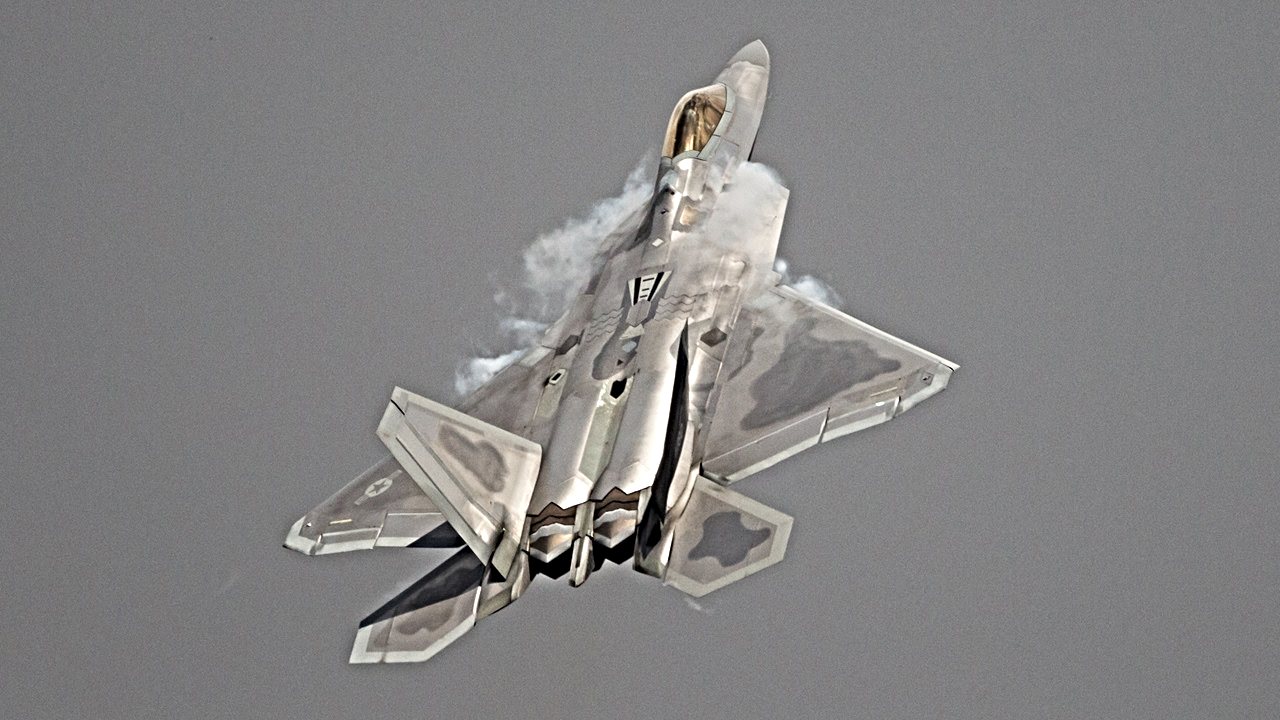F-22 Raptor vs. NGAD: What Is the Difference?
What are the differences between the NGAD as we know it now and the F-22 Raptor, what many consider today the best fighter jet on the planet?
NGAD vs. F-22 - What Is the Difference? As tensions continue to ramp up between Washington and Beijing, all eyes remain on the fighter capabilities of both countries.
For many years, the U.S. retained air superiority over its adversaries with the introduction of the F-22 Raptor. As the world’s first ever fifth-generation fighter platform to ever take to the skies, the Raptor was truly unmatched.
However, both Beijing and Moscow have worked to modernize their own fleets over the years, resulting in the introduction of the Chengdu J-20 and Sukhoi Su-57.
With multiple fifth-generation platforms in service today, America’s aerial dominance is arguably fading. To retain an edge over competitors, the U.S. Air Force is developing a sixth-generation prototype dubbed the Next-Generation Air Dominance (NGAD) program.
However, what are the differences between the NGAD as we know it now and the F-22 Raptor, what many consider today the best fighter jet on the planet?
Introducing the F-22 Raptor
As the first operational jet to combine stealth, super cruiser, super maneuverability, and sensor fusion in a single platform, the Raptor’s reputation in aerial space is legendary.
Back in the early 1980s, at the height of the Cold War, the Raptor was first conceptualized to replace the U.S. military’s aging fleets of F-15 Eagles and F-16 Fighting Falcons.
The U.S. needed a more advanced platform capable of going up against the Soviet’s Sukhoi Su-27 Flanker, Mikoyan MiG-29 Fulcrum, and new surface-to-air missile systems. The Air Force initiated its Advanced Tactical Fighter (ATF) project, announcing this would replace its T-14 Tomcat.
While seven companies competed to receive the service’s bid to develop the platform, manufacturers Lockheed Martin and Northrop Grumman eventually were selected. Lockheed teamed up with Boeing and General Dynamics, while Northrop collaborated with McDonnell Douglas.
By the early 1990s, the first YF-22 prototype took to the skies and was soon after selected by the Air Force as its preferred new fighter. Over the next decade, the F-22 would make its maiden flight and would begin its production phase in the early 2000’s.
Around this time, the Cold War had dissipated following the collapse of the USSR, rendering the need for a fifth-generation platform less urgent.
American engineers would shift focus to develop an even newer platform as the War on Terror began to emerge. As the Raptor’s successor, the F-35 Joint Strike Fighter was produced, it became clear that the platform was far more cost-effective than the F-22.
F-22 Specs and capabilities
Although the Raptor was primarily designed as an air superiority fighter, the formidable platform also can carry out electronic warfare, ground attack and signals intelligence capabilities.
The Raptors are powered by two Pratt & Whitney turbofan engines and are able to reach speeds of Mach-2.0 (roughly 1,500 miles per hour).
With a ceiling of 50,000 feet and a range of 1,841 miles, the F-22 truly dominates when it comes to specs and capabilities.
In terms of armaments, the Raptors can pack a punch. Each jet is fitted with an M61A2 20mm Gatling gun, in addition to being able to fire air—to-air and air-to-ground weapons, including precision-guided ground bombs like the Joint Direct Attack Munitions (JDAM).
Perhaps most significantly, the F-22s have a smaller cross-radar section than the F-35s, making them extremely difficult for enemy aircraft to detect.

Introducing the NGAD
Despite the Raptor’s unreal capabilities, the Air Force is steadily developing a next-generation fighter platform.
First conceptualized back in 2014, the new program is designed to achieve air superiority.
While all the details surrounding this new program have yet to be disclosed, the Air Force has asserted that stealth, digital design, advanced weapons, propulsion and thermal management will be the five technologies that will be emphasized in the design.
Since short-range capabilities are a limitation of American fighter platforms today, some analysts believe that the service may want to procure both short and long-range variants of its NGAD fighter. If war over Taiwan does arise and includes the U.S., American airframes must be able to strike Chinese land-attack missiles from wherever they are positioned.
Perhaps the most exciting detail surrounding the NGAD is that 1,000 collaborative aircraft(drones) are expected to fly alongside the piloted-fighters as “wingmen.”
Even though the Air Force is working to retire its remaining fleets of F-22 fighters to make room in its budget for the upcoming NGAD program, the world’s first ever fifth-gen jets should not be discounted.
The F-35 may have the Raptor beat in terms of technology. However, the Raptor still retains key enhancements over its successor. Since the NGAD is not in commission yet, the service needs all the fifth-generation fighters it can get its hands on.
Maya Carlin is an analyst with the Center for Security Policy and a former Anna Sobol Levy Fellow at IDC Herzliya in Israel. She has by-lines in many publications, including The National Interest, Jerusalem Post, and Times of Israel. You can follow her on Twitter: @MayaCarlin.


